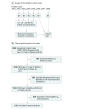Association of Race and Ethnicity With Glycemic Control and Hemoglobin A1c Levels in Youth With Type 1 Diabetes
- PMID: 30370425
- PMCID: PMC6203341
- DOI: 10.1001/jamanetworkopen.2018.1851
Association of Race and Ethnicity With Glycemic Control and Hemoglobin A1c Levels in Youth With Type 1 Diabetes
Abstract
Importance: Health disparities in the clinical presentation and outcomes among youth with type 1 diabetes exist. Long-term glycemic control patterns in racially/ethnically diverse youth are not well described.
Objectives: To model common trajectories of hemoglobin A1c (HbA1c) among youth with type 1 diabetes and test how trajectory group membership varies by race/ethnicity.
Design setting and participants: Longitudinal cohort study conducted in 5 US locations. The analysis included data from 1313 youths (aged <20 years) newly diagnosed in 2002 through 2005 with type 1 diabetes in the SEARCH for Diabetes in Youth study (mean [SD] age at diabetes onset, 8.9 [4.2] years) who had 3 or more HbA1c study measures during 6.1 to 13.3 years of follow-up. Data were analyzed in 2017.
Exposures: Self-reported race/ethnicity.
Main outcomes and measures: Hemoglobin A1c trajectories identified through group-based trajectory modeling over a mean (SD) of 9.0 (1.4) years of diabetes duration. Multinomial models studied the association of race/ethnicity with HbA1c trajectory group membership, adjusting for demographic characteristics, clinical factors, and socioeconomic position.
Results: The final study sample of 1313 patients was 49.3% female (647 patients) with mean (SD) age 9.7 (4.3) years and mean (SD) disease duration of 9.2 (6.3) months at baseline. The racial/ethnic composition was 77.0% non-Hispanic white (1011 patients), 10.7% Hispanic (140 patients), 9.8% non-Hispanic black (128 patients), and 2.6% other race/ethnicity (34 patients). Three HbA1c trajectories were identified: group 1, low baseline and mild increases (50.7% [666 patients]); group 2, moderate baseline and moderate increases (41.7% [548 patients]); and group 3, moderate baseline and major increases (7.5% [99 patients]). Group 3 was composed of 47.5% nonwhite youths (47 patients). Non-Hispanic black youth had 7.98 higher unadjusted odds (95% CI, 4.42-14.38) than non-Hispanic white youth of being in the highest HbA1c trajectory group relative to the lowest HbA1c trajectory group; the association remained significant after full adjustment (adjusted odds ratio of non-Hispanic black race in group 3 vs group 1, 4.54; 95% CI, 2.08-9.89). Hispanic youth had 3.29 higher unadjusted odds (95% CI, 1.78-6.08) than non-Hispanic white youth of being in the highest HbA1c trajectory group relative to the lowest HbA1c trajectory group; the association remained significant after adjustment (adjusted odds ratio of Hispanic ethnicity in group 3 vs group 1, 2.24; 95% CI, 1.02-4.92). In stratified analyses, the adjusted odds of nonwhite membership in the highest HbA1c trajectory remained significant among male patients and youth diagnosed at age 9 years or younger, but not female patients and youth who were older than 9 years when they were diagnosed (P for interaction = .04 [sex] and .02 [age at diagnosis]).
Conclusions and relevance: There are racial/ethnic differences in long-term glycemic control among youth with type 1 diabetes, particularly among nonwhite male patients and nonwhite youth diagnosed earlier in life.
Conflict of interest statement
Conflict of Interest Disclosures: Dr Crandell reported grants from the National Institutes of Health (NIH) during the conduct of the study. Dr Lawrence reported grants from the National Institute of Diabetes and Digestive and Kidney Diseases during the conduct of the study. Dr Tooze reported grants from the NIH during the conduct of the study. Dr Wagenknecht reported grants from the NIH during the conduct of the study. Dr Zhong reported other support from Sanofi US outside the submitted work. No other disclosures were reported.
Figures


Comment in
-
Racial Differences in Trajectories of Hemoglobin A1c: Further Evidence of Gaps in Care.JAMA Netw Open. 2018 Sep 7;1(5):e181882. doi: 10.1001/jamanetworkopen.2018.1882. JAMA Netw Open. 2018. PMID: 30646138 No abstract available.
References
-
- Diabetes Control and Complications Trial Research Group Effect of intensive diabetes treatment on the development and progression of long-term complications in adolescents with insulin-dependent diabetes mellitus: Diabetes Control and Complications Trial. J Pediatr. 1994;125(2):-. doi: 10.1016/S0022-3476(94)70190-3 - DOI - PubMed
-
- Nathan DM, Genuth S, Lachin J, et al. ; Diabetes Control and Complications Trial Research Group . The effect of intensive treatment of diabetes on the development and progression of long-term complications in insulin-dependent diabetes mellitus. N Engl J Med. 1993;329(14):977-986. doi: 10.1056/NEJM199309303291401 - DOI - PubMed
-
- White NH, Cleary PA, Dahms W, Goldstein D, Malone J, Tamborlane WV; Diabetes Control and Complications Trial (DCCT)/Epidemiology of Diabetes Interventions and Complications (EDIC) Research Group . Beneficial effects of intensive therapy of diabetes during adolescence: outcomes after the conclusion of the Diabetes Control and Complications Trial (DCCT). J Pediatr. 2001;139(6):804-812. doi: 10.1067/mpd.2001.118887 - DOI - PubMed
Grants and funding
LinkOut - more resources
Full Text Sources
Medical
Miscellaneous

